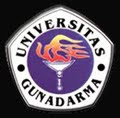Most compression algorithms are based on the DCT (Discrete Cosine Transform) transformation, which represents data on the frequency domain. Most robust watermarking techniques also rely on spatial-to-frequency transformation to achieve their robustness, especially by using the DCT and FFT transforms [22, 40, 41]. This robustness is usually with respect to compression, among others. Since the output data had to be compressed because of power and size issues, and there is a great similarity in the process of compression and embedding a robust watermark, it makes sense to consider both at the same time. By selecting a watermarking technique based on the DCT, resource sharing with, and robustness to compression can be simultaneously achieved. A lot of research has already been done in trying to develop efficient and low-power-consuming implementations, because of the importance of the DCT to compression. Tying the watermarking scheme to compression raises another issue, since many of the watermarking methods that work on compressed video are strongly dependent on the format. This is very true for methods that work on MPEG-4 video. Since this work is not focused on a particular compression format, but on the process of watermarking, it is desirable to select a method that is independent of compression formats or standards.
Compression and the DCT
From the different compression methods available, the DCT compression mechanism was selected because of its wide acceptance in the digital video and image domain. Selecting the DCT for the application gives flexibility in terms of the final compression format to be used. Wavelet compression seems to provide better compression and localization information for watermarking, but lacks the flexibility of and the resources currently available for DCT compression. The various MPEG formats, the various H.26x formats, JPEG, Motion JPEG, and even proprietary formats based on DCT compression plus some sort of entropy encoding can be used in the future. As was seen earlier, many of today’s system perform MPEG4, MPEG2 or H.263 compression on the data. Utilizing the DCT engine therefore provides a practical and efficient solution for our application.
Artikel sumber : grad.uprm.edu/tesis/irizarrycruz.pdf
Ulasan
Kompresi adalah pengubahan data kedalam bentuk yang memerlukan bit yang lebih sedikit, biasanya dilakukan agar data dapat disimpan atau dikirimkan dengan lebih efisien. Jika kebalikan dari proses ini, yaitu dekompresi, menghasilkan data yang sama persis dengan data aslinya, maka kompresi tersebut disebut lossless compression. Sebaliknya, dekompresi tersebut
Langganan:
Postingan (Atom)
Cari Blog Ini
Daftar Blog Mahasiswa Gunadarma
-
-
-
-
-
Game Facebook, Solusi Game Online gratis12 tahun yang lalu
-
-
Agent Koki Otomatis13 tahun yang lalu
-
Cara Dapet Token Ninja Saga Gratis13 tahun yang lalu
-
DOWNLOAD NARUTO SHIPPUUDEN13 tahun yang lalu
-
ODD-EVEN TRANSPOSITION SORT13 tahun yang lalu
-
Pengantar UML13 tahun yang lalu
-
Pemanfaatan Hard Disk13 tahun yang lalu
-
Apa itu Gnome pada Linux ?13 tahun yang lalu
-
7 Aplikasi Handphone13 tahun yang lalu
-
Utility Computing13 tahun yang lalu
-
apakah anda tau spoofing ????13 tahun yang lalu
-
The Ten Axioms of Modern Computing13 tahun yang lalu
-
Office 201013 tahun yang lalu
-
WOW..Intel Atom on Smartphone13 tahun yang lalu
-
Cara Kerja VGA Card13 tahun yang lalu
-
Teknologi SLI dari Nvidia13 tahun yang lalu
-
3D Computer Graphics13 tahun yang lalu
-
Security Wireless13 tahun yang lalu
-
-
Sejarah Perkembangan Perangkat Lunak dan Perangkat Keras Komputer #113 tahun yang lalu
-
Progress of Modern Computing13 tahun yang lalu
-
Tips mempercepat proses defrag13 tahun yang lalu
-
Literatur Pemrograman Multimedia14 tahun yang lalu
-
-
PEMOGRAMAN MULTIMEDIA14 tahun yang lalu
-
pemrogramanmultimedia_4ia14_paper14 tahun yang lalu
-
simple present and present progresive14 tahun yang lalu
-
Pengertian Frame Relay14 tahun yang lalu
-
Jaringan Komputer14 tahun yang lalu
-
SQUID14 tahun yang lalu
-
-
-
-



